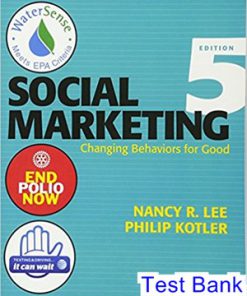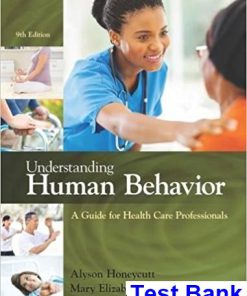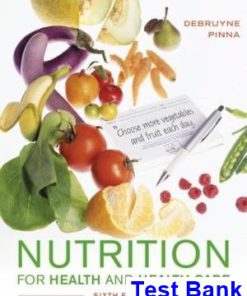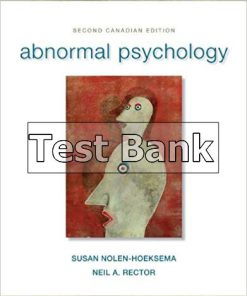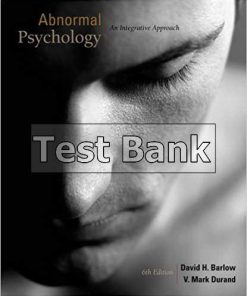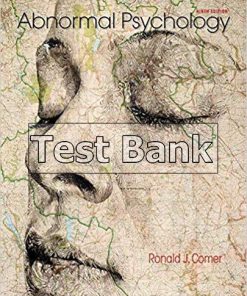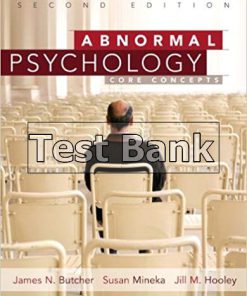Microbiology and Infection Control for Health Professionals 6th Edition Lee Test Bank
$26.50$50.00 (-47%)
Microbiology and Infection Control for Health Professionals 6th Edition Lee Test Bank.
You may also like
This is completed downloadable of Microbiology and Infection Control for Health Professionals 6th Edition Lee Test Bank
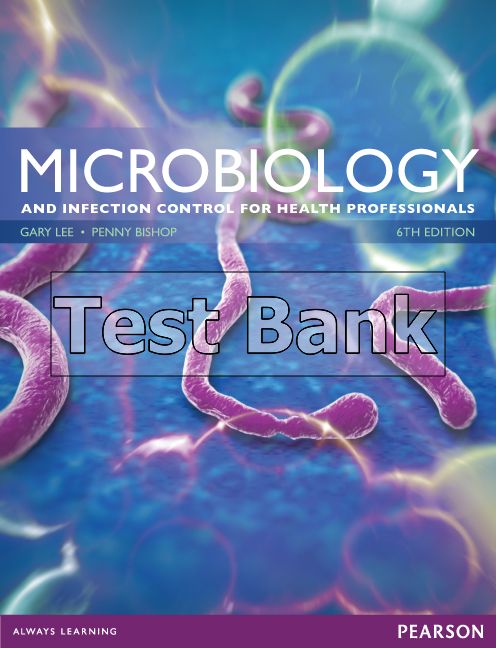
Product Details:
ISBN 9781486019724, 1486019722
Author:
An Australian ground-up microbiology text with a focus on infection control for nursing and allied health students.
This resource aims to provide a comprehensive guide to microbiology, infectious diseases and infection control. It is suitable for students, clinicians and educators in the health professions.
Microbiology is rapidly changing due to new research, the discovery of new diseases and pathogens, and changes in clinical practice. This edition presents a comprehensive update in new diagnostic techniques and improved guidelines for antibiotic use and infection control.
Where appropriate, the emphasis is placed on Australian data, the incidence of diseases in Australia, and Australian guidelines for infection control practices.
Table of Content:
- UNIT 1 Fundamental microbiology
- CHAPTER 1 The invisible world
- The importance of microorganisms in the environment
- Microorganisms as pathogens
- The nature of living organisms
- Classification of living organisms
- Procaryotic and eucaryotic cells
- Viruses
- Discover of the causes of infectious diseases
- Infectious diseases in the 21st century
- The global health scene
- Reasons for the emergence and re-emergence of infectious diseases
- The Australian health scene
- Conclusion
- CHAPTER 2 Biological reactions in microbial cells
- Structure of biological molecules
- Specificity
- Enzymes and chemical reactions
- Energy production in biological systems
- Biochemical pathways of energy production
- Anabolism—biosynthesis of cellular components
- Interrelationship of metabolic pathways
- Practical applications of microbial processes
- Industrial applications of microbial metabolism
- Microorganisms as tools in scientific research
- Environmental uses for microorganisms
- CHAPTER 3 Bacteria
- Classification of bacteria
- Structure of bacteria
- Bacterial growth requirements
- Pattern of bacterial reproduction
- Identification of bacteria in clinical samples
- Growth of clinical specimens
- Diversity of bacteria
- Bacteria of medical importance
- CHAPTER 4 Genes and biotechnology
- Genes
- Structure of DNA
- Nucleic acid synthesis
- Replication of chromosomal DNA
- Protein synthesis
- Mutation
- Transfer of genetic information
- Genetic engineering
- Methods of DNA analysis
- Clinical applications
- The ethics of genetic engineering
- CHAPTER 5 Viruses and viral diseases
- Characteristics of viruses
- Structure of viruses
- Classification of viruses
- Host range and specificity
- Viral replication
- Pathogenesis of viral infections in humans
- Host response to viral infection
- Viral evasion mechanisms
- Outcomes of viral infection
- Persistence of viral infections
- Transmission of viral diseases
- Diagnosis of viral infections
- Growth of viruses in the laboratory
- Prevention of viral disease
- Treatment of viral infections
- Future directions in virus research
- CHAPTER 6 Eucaryotic microorganisms: fungi, protozoa and multicellular parasites
- Fungi
- Parasites
- Protozoa
- Helminths
- Ectoparasites
- Arthropod vectors
- UNIT 2 Host-microbe interactions
- CHAPTER 7 Host-microbe interactions and principles of disease
- Symbiosis
- Microorganisms of the human body: normal microbiota (flora)
- Infection and disease
- The disease process
- Koch’s postulates
- Signs and symptoms of disease
- Development of disease
- Types of infection
- Spread of infectious diseases
- CHAPTER 8 Epidemiology: how diseases are spread
- Communicable and non-communicable diseases
- Reservoirs of infection
- Portals of entry
- Portals of exit
- Transmission of microorganisms
- Epidemiology
- Evidence-based practice
- CHAPTER 9 The body’s defence systems
- Overview of body defences
- Innate immunity
- Adaptive immune system
- Disorders of the immune system
- CHAPTER 10 Pathogenic mechanisms and evasion strategies of microorganisms
- Adherence
- Toxins
- Invasion of cells
- Cellular transformation into tumour cells
- Other mechanisms of pathogenesis
- Evasion strategies
- UNIT 3 Prevention and control of infectious diseases
- CHAPTER 11 Principles of sterilisation and disinfection
- General principles of microbial removal
- Selection of method for removal of microorganisms
- Cleaning
- Sterilisation
- Disinfection
- CHAPTER 12 Antimicrobial therapy
- The origins of chemotherapy
- The development of antimicrobial drugs
- Antibacterial drugs
- Antiviral drugs
- Therapeutic use of antimicrobial drugs
- Implications for nursing practice
- Development of resistance to antimicrobial drugs
- Global spread of resistance
- Probiotics
- Alternative medicines
- CHAPTER 13 Infection control in healthcare facilities
- A brief history of hospital infection
- The importance of healthcare-associated infections
- Types of healthcare-associated infections
- Organisms that cause healthcare-associated infections
- Sources of hospital infections
- Routes of transmission of microorganisms in healthcare
- Factors contributing to the incidence of hospital-acquired infections
- Control of infection in healthcare facilities
- Other infection control considerations
- Infection control teams
- Specific problems in infection control
- Occupational exposure for hospital staff
- CHAPTER 14 Issues in public health
- The Australian health scene
- Notifiable diseases
- Infectious diseases in Australia
- Analysis of notification rates
- Primary healthcare
- Screening procedures
- Immunisation
- Compliance with immunisation
- Infectious diseases in childcare centres
- Healthcare in rural and remote areas
- Infectious diseases from outside Australia
- Public health issues in New Zealand
- UNIT 4 Infections of body systems
- CHAPTER 15 Microbial techniques for diagnosis of infection
- Types of microbiology laboratory tests
- Specimen collection
- Common specimen types
- Microscopic techniques
- Culturing bacteria and fungi
- Culture of other microorganisms
- Serology (immunological diagnosis)
- Antigen detection
- Detection of microorganisms using molecular techniques
- Point of care testing
- CHAPTER 16 Skin, wound and eye infections
- Infections of the skin
- Wound infections
- Infections of the eye
- CHAPTER 17 Respiratory tract infections
- Predisposing factors of respiratory infections
- Upper respiratory tract infections
- Acute infections of the lower respiratory tract
- Chronic infections of the lower respiratory tract
- CHAPTER 18 Gastrointestinal tract infections
- Acute diarrhoeal diseases
- Other gastrointestinal diseases
- Helminth infections of the gastrointestinal tract
- Hepatitis
- CHAPTER 19 Cardiovascular and multisystem infections
- Systemic bacterial infections
- Systemic viral infections
- Systemic fungal infections
- Systemic protozoal infections
- Systemic helminth infections
- CHAPTER 20 Infections of the nervous system
- Infections of the central nervous system
- Other infections involving the nervous system
- CHAPTER 21 Infections of the urinary and reproductive systems
- Defences of the urinary and reproductive systems
- Urinary tract infections
- Infections of the reproductive system
- Glossary
- Index
People Also Search:
microbiology and infection control for health professionals lee
microbiology and infection control for health professionals 6th edition lee
microbiology and infection control for health professionals
microbiology and infection control for health professionals 6th edition testbank download pdf
microbiology and infection control for health professionals 6th edition download scribd
microbiology and infection control for health professionals 6th edition


